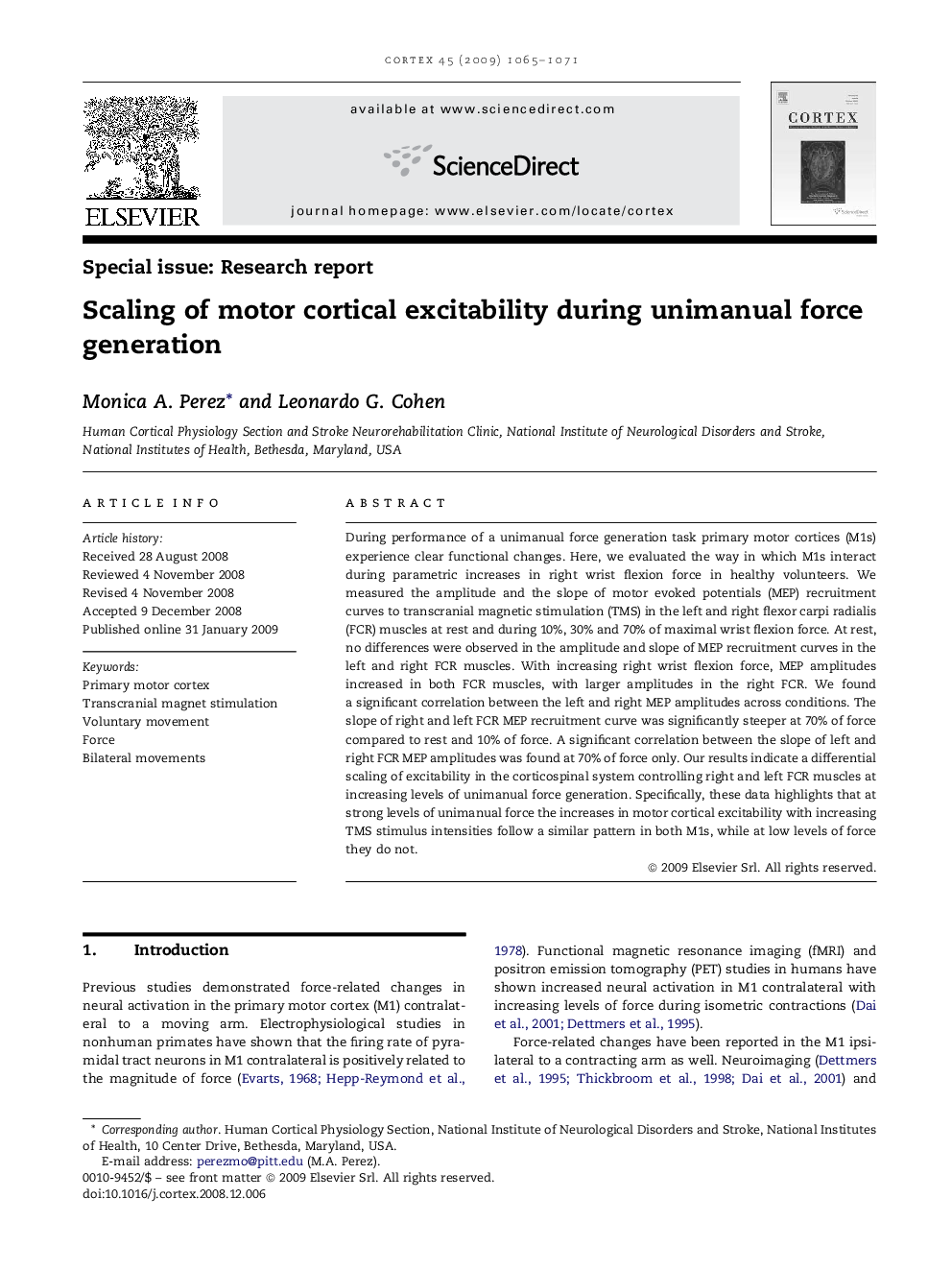| Article ID | Journal | Published Year | Pages | File Type |
|---|---|---|---|---|
| 10463403 | Cortex | 2009 | 7 Pages |
Abstract
During performance of a unimanual force generation task primary motor cortices (M1s) experience clear functional changes. Here, we evaluated the way in which M1s interact during parametric increases in right wrist flexion force in healthy volunteers. We measured the amplitude and the slope of motor evoked potentials (MEP) recruitment curves to transcranial magnetic stimulation (TMS) in the left and right flexor carpi radialis (FCR) muscles at rest and during 10%, 30% and 70% of maximal wrist flexion force. At rest, no differences were observed in the amplitude and slope of MEP recruitment curves in the left and right FCR muscles. With increasing right wrist flexion force, MEP amplitudes increased in both FCR muscles, with larger amplitudes in the right FCR. We found a significant correlation between the left and right MEP amplitudes across conditions. The slope of right and left FCR MEP recruitment curve was significantly steeper at 70% of force compared to rest and 10% of force. A significant correlation between the slope of left and right FCR MEP amplitudes was found at 70% of force only. Our results indicate a differential scaling of excitability in the corticospinal system controlling right and left FCR muscles at increasing levels of unimanual force generation. Specifically, these data highlights that at strong levels of unimanual force the increases in motor cortical excitability with increasing TMS stimulus intensities follow a similar pattern in both M1s, while at low levels of force they do not.
Related Topics
Life Sciences
Neuroscience
Behavioral Neuroscience
Authors
Monica A. Perez, Leonardo G. Cohen,
